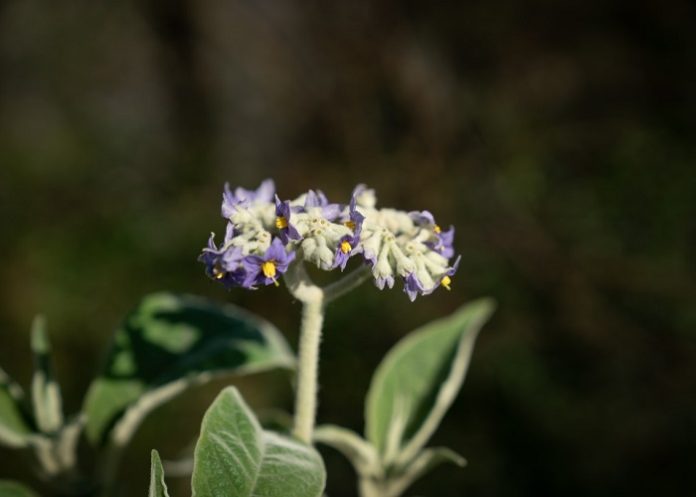South African researchers have discovered that a common weed – usually dismissed as an invasive plant – might have the potential to fight cancer, and be a contributing tool in the fight against antimicrobial resistance.
The University of Johannesburg scientists identified promising medical properties in an unlikely source: the common woolly nightshade, their findings revealing that extracts from the plant’s ripe fruit exhibit potent activity against aggressive brain cancer cells and antibiotic-resistant bacteria.
The study, led by Dr Abraham Goodness Ogofure, Dr Tendani Sebola and Professor Ezekiel Green of the Molecular Pathogenic and Molecular Epidemiology Research Group, found that the ripe fruit contains 15 distinct bioactive compounds. This is three times more than the unripe fruit.
Among these, alkaloids and terpenoids account for more than 50%, both known for their therapeutic potential.
The compounds have been isolated but not yet detected, Ogofure told News24.
“While our findings show strong anti-cancer activity in the extracts against glioblastoma cells, we do not yet know which specific compounds are responsible for this effect. Encouragingly, the extracts had minimal impact on healthy lung cells, suggesting potential selectivity.”
According to Statistics SA, in 2018, cancers and other tumours accounted for almost 10% of all deaths and were the fourth leading cause of death in South Africans.
While overall mortality dropped by 24.1% between 2008 and 2018, cancer-related deaths increased by 29.3% over the same period.
The plant extract also demonstrated activity against 11 harmful pathogens, including Staphylococcus aureus and E. coli, noted Ogofure.
“These findings come at a crucial time, as antibiotic resistance is estimated to contribute to 5m deaths globally each year,” he added.
According to a 2024 report by the National Institute for Communicable Diseases, South Africa saw a 50% annual growth in antibiotic use between 2020 and 2022, driven mainly by the private sector.
The same report highlighted increasing drug resistance among some bacteria, especially Klebsiella pneumoniae.
Sebola highlighted the broader implications: “It’s fascinating that a plant often removed as a nuisance may offer tools to tackle two of the most pressing global health threats: cancer and antimicrobial resistance.”
The research team plans to isolate individual compounds from the extract, evaluate them against glioblastoma and other pathogens, and explore the effects of using consortia of these compounds in combination.
“This is just the beginning,” added Green. “This work is about more than just a plant – it’s about rethinking how we perceive biodiversity. Sometimes, what we consider weeds may hold the key to transformative medical breakthroughs.”
The study was published in Nature Scientific Reports.
Study details
Antibacterial and anticancer properties of Solanum mauritianum fruit components analyded using LC-QTOF-MS/MS
Abraham Goodness Ogofure, Tendani Sebola & Ezekiel Green
Published in Nature Scientific Reports on 14 May 2025
Abstract
This study evaluated the antibacterial and anticancer properties of S. mauritianum fruit components through LC-QTOF-MS/MS metabolomic profiling. The samples were extracted, and the antibacterial activity was conducted using a standard Resazurin microtiter assay. The minimum inhibitory concentrations (MICs) of the crude extracts were evaluated against reference pathogenic bacterial isolates. The anticancer activity of the extracts was tested against U-87 MG glioblastoma and A549 lung carcinoma cells (ATCC cancer cell lines). The real-time toxicity assay and comprehensive metabolomic profiling were evaluated for the crude extracts. Results revealed that the ripe fruit coat exhibited the richest chemical diversity, with 15 unique metabolites, while the unripe fruit had 5. Detailed classification of the identified metabolites showed that alkaloids accounted for 33.3%, followed by terpenoids (21.2%). The extracts of the fruit components had significant antibacterial activity against the referenced pathogens of public health importance. Extracts from the ripe fruit coat demonstrated significant cytotoxicity on U-87 MG glioblastoma cell viability, suggesting potential anticancer activity, while the effect on A549 lung carcinoma cells showed high viability across all treatments. The real-time cytotoxicity assays further highlighted the dose-dependent inhibition of glioblastoma cells by crude extracts from the ripe fruit coat, emphasising its therapeutic potential.
See more from MedicalBrief archives:
Inhaled CBD shrinks glioblastoma in animal model
Glioblastoma: First trial for oral cannabinoids plus chemotherapy

